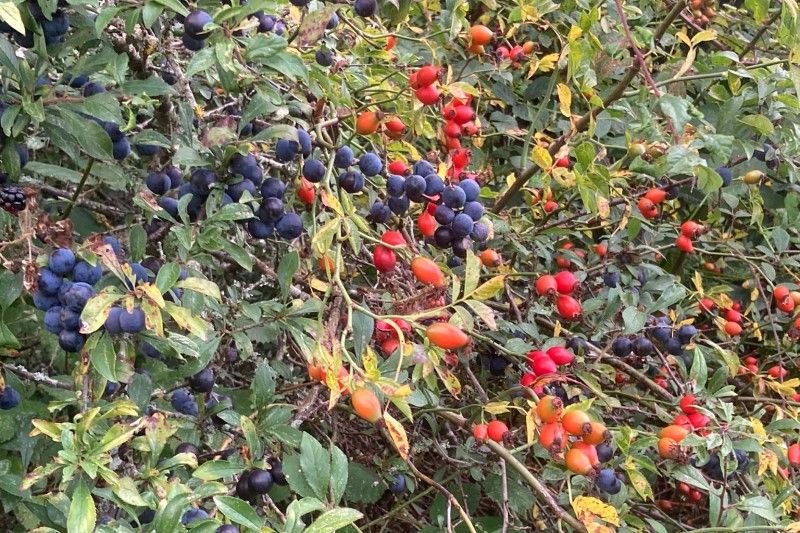We will plant 45,000 miles. Not a follow up song by the Proclaimers, but an ambitious target set by Defra to plant and restore 45,000 miles of hedgerow by 2050.
An opportunity to design
It’s been a long time since we’ve planted hedges at any sort of scale. In fact, most of the hedges we manage now are ones designed and planted by people that worked the land many generations ago. This means it’s something of an opportunity for us to now be able to design new hedgerows to suit our modern needs. We could choose a focus on wildlife, wood-fuel, carbon sequestration, or any of the many on-farm benefits such as shade, shelter, livestock forage or soil protection. We can also choose where these new hedges go, whether they follow hill contours or link up other patches of habitat. In most cases hedges will provide all these benefits at once, they are nifty like that, but knowing our main objective for each hedge may tweak the species mix and hedgerow trees we choose to include.
The fantastic document by the Devon Hedge Group runs through some of the things to consider when planning your new hedges. Whilst there is a Devon slant to some elements, the table in Annex 1 is extremely useful for deciding on your species mix.
How do we establish good hedges?
As it’s been a while since growing new hedges has been commonplace, it’s worth refreshing ourselves on the best way to establish a good hedge; there’s more to it than just the planting. In fact, the management they see in the first decade or so really shapes them.
We can choose to leave a young hedge uncut in preparation for its first rejuvenation; laying from 10/15 years, or coppicing can be done earlier. Maiden hedge rejuvenation turns each planted whip into a multi-stemmed bush creating a thick robust hedge. We can choose to trim young hedges incrementally higher and wider from the start, encouraging the development of a dense branching structure. Or we can use a combination of approaches to best suit each situation. Whichever method we decide on, it’s useful to plan our approach from the start.
Importantly, don’t fall into the trap of letting young hedges get to the desired height and then repeatedly trimming them at that level. This doesn’t allow a hedge to develop that thick branching density from the base up and will result in poor shape and structure.
Remember that a hedge puts on branching growth just below where it’s cut, and you won’t go too far wrong.
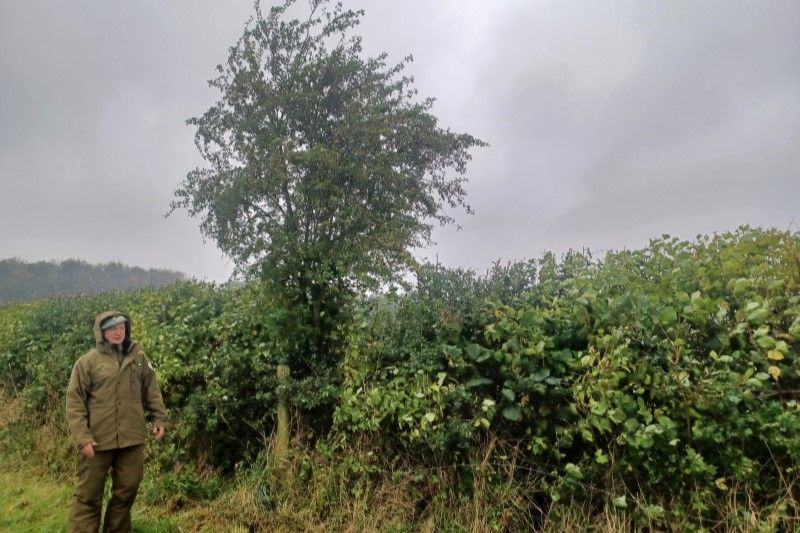
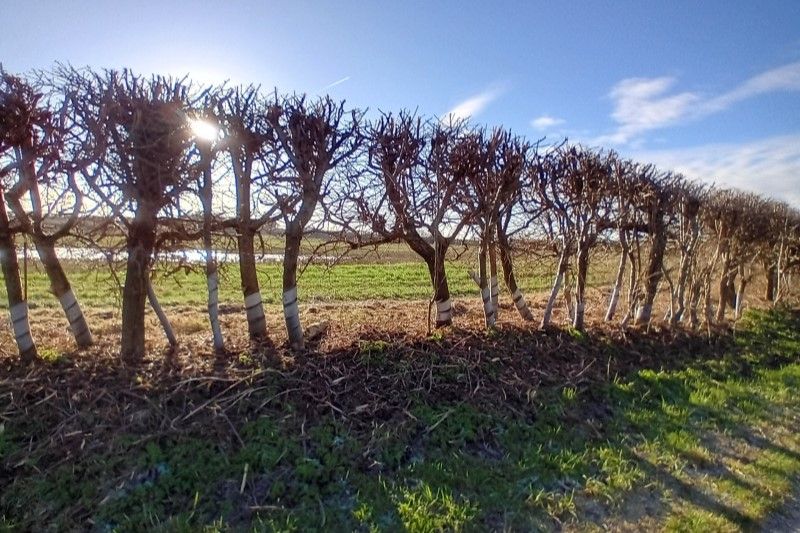
Do we have enough plants?
45,000 miles of new hedge requires 434 million whips to plant. The advantage of making this long-term commitment from Defra is that tree nurseries have enough warning to begin scaling up whip production. It’s important to make sure, as far as possible, that new planting is done with a diverse range of local stock and not with imported trees.
The Tree Council has been trialing new ways of establishing hedgerows and direct seeding into prepared ground has produced some promising results. Perhaps with a bit more experimentation this could be a viable alternative to planting established whips from nurseries.
What about existing hedges?
Many of our hedges are already overdue rejuvenation (coppicing or laying) to bring them back into good health. We’ve freeze-framed them in either routine trimming or in no active management for so long that their structures are now declining.
As these hedges mature in either freeze-frame scenario, they lose the branching density at the base which is crucial for much hedge wildlife, and the stems get fewer and further between, thinning out the hedge and ultimately leading to gaps. Ideally, we’ll do a push to get these hedges back in good condition through staggered laying and coppicing. For big old overgrown hedges, the more mature they get the more difficult (and expensive) they can be to rejuvenate. The new hedges being planted will also need a rejuvenation, often called the ‘maiden lay’ anywhere from 10 to 15 years old. Being young, bendy hedges with evenly sized and spaced stems, they’re a much more attractive prospect to lay in comparison with the big old ones which can be a bit complex. This means there is potential for the rejuvenation needs of big hedges to be overlooked, directing our limited time and energy towards the young ones instead.
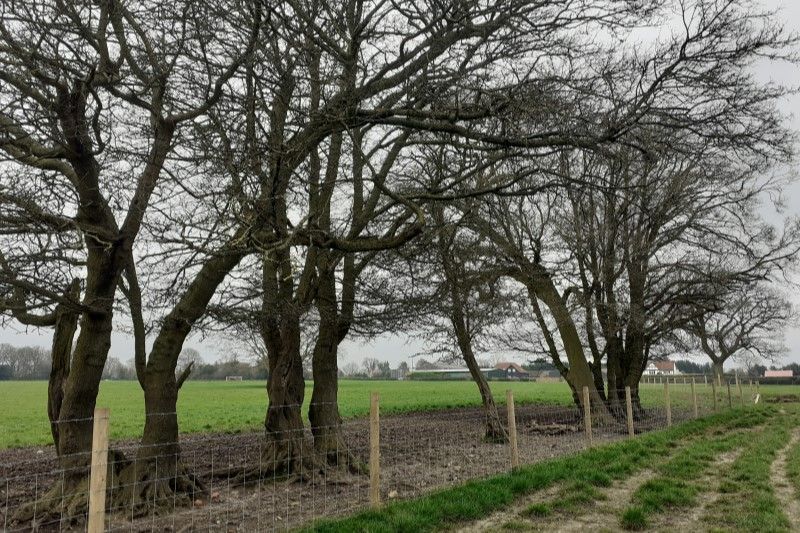
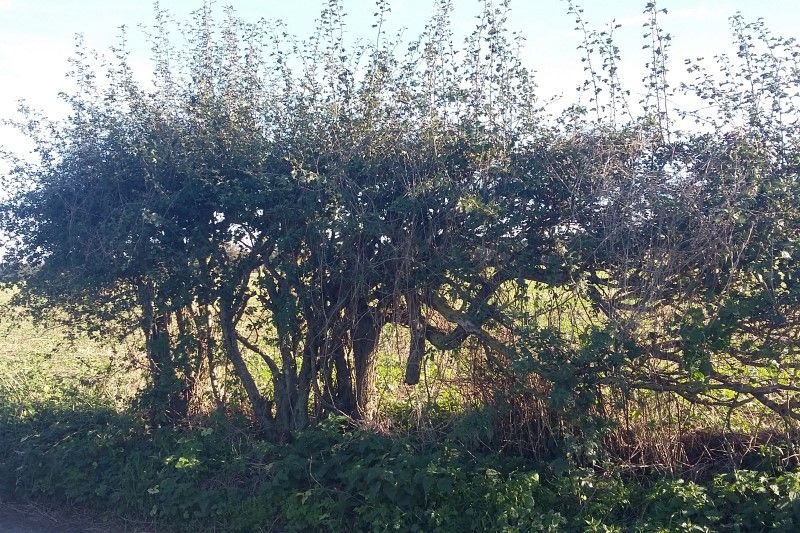
If we don’t have the time or resources to manage these existing hedges, it’s worth serious consideration as to whether planning new ones is our best option in each case. There’s little point losing our existing hedges in favour of planting new ones. Ideally, we need to work out how to achieve both.
The solution? Plant one, lay one
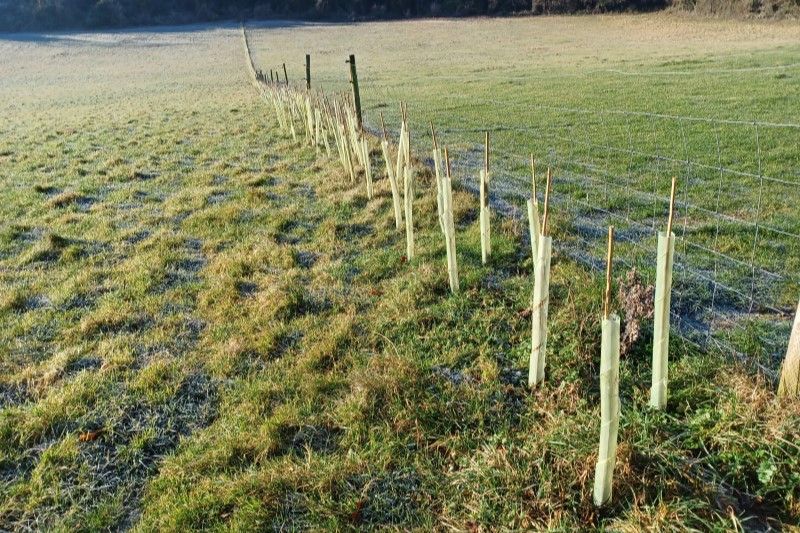
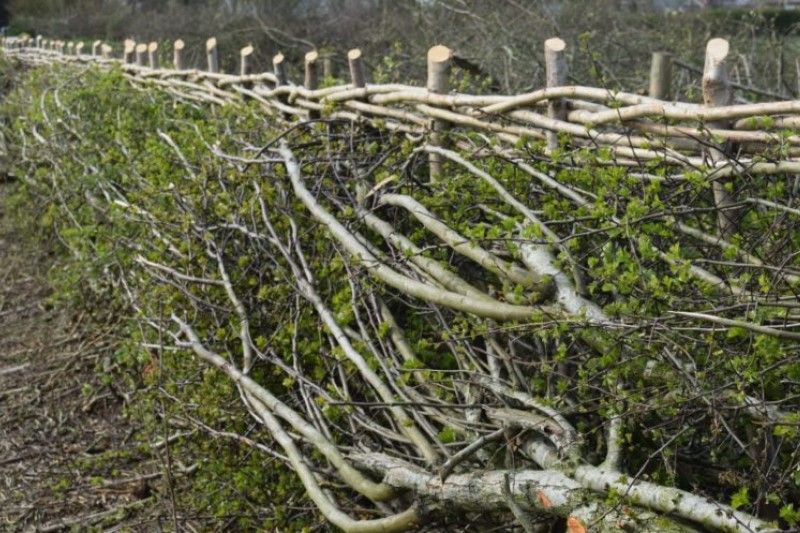
Knowing this conflict of interest is helpful, it means we can pre-empt a decision of where to allocate limited resourcing down the line by tackling some of the old hedges as we plant new ones. Plant one, lay one! If you have access to a chipper, the excess brash from your hedge rejuvenation can be used to mulch your newly planted ones. Which leads to the final piece in the puzzle, regardless of whether we use faster approaches to rejuvenation such as conservation-style hedgelaying, mechanical hedgelaying or tree shears for coppicing, we’ll almost certainly need more people in the game. We’ll need more hedge layers and more people understanding the hedge lifecycle that’s fundamental to keeping hedgerows in good condition.
Hedgerows are a dynamic habitat that require management and managing them on a cycle ensures their health and long term survival. Here are some top tips for managing hedgerows:

